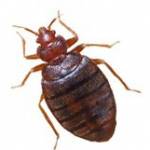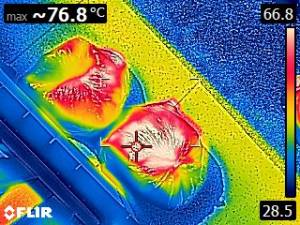Bedbugs And The Process To Get Rid Of Them:
I have written numerous articles about bedbugs over my years in the pest control industry. So here I will explain the fundamentals of a complete bedbugs treatment process. For anyone that has ever had to deal with these little pests, they will know what a task it can be to get rid of them.
Getting rid of bedbugs isn’t as easy as it may seem, there are numerous steps that need to be done for a successful treatment. Bed bugs are one of the hardest pests to get rid of and eliminate from a home. They will hide in all manner of places around a room, from the bed to light switches and many other places. This makes the bedbugs treatment process harder, so a sound understanding of their harbouring and feeding habits is crucial.
A Bit About Bedbugs:
So let’s start off with a little bit about bedbugs; they are a blood-sucking insect with a huge thirst for our blood. The females cannot continue to lay eggs without a constant blood meal; their host is the provider of this meal. Bed bugs will generally stay close to their host so the most common place to find them is the bed frame and mattress.
I have done bedbugs jobs where the whole room is infested with them; they get into curtains, walls and edges of carpets. They will lay their eggs just about anywhere within close proximity to their host.
Bedbugs can seek out a new host by their body temperature and they can be picky on who they feed on. Bedbugs will generally test bite their victim first this is why many people that have had bedbugs find they have a line of three or four bites in a row. Once they have found a suitable host they will then start to find hiding places around the bed frame and mattress.
They come out in the early hours of the night biting their host to enable them to continue breeding.


How Do You Get Bedbugs?
Bedbugs are transported by other people travelling around the world; many hotels and motels have or will have a bedbug’s problem at some point. It is something that can’t be policed by hoteliers but they must be vigilant when preparing rooms for guests.
The room staffs that change bed linen and clean the rooms after a guest leaves needs to keep an eye out for signs of bedbugs. They can spread to other rooms at an alarming rate if they aren’t brought under control fast.
Backpackers are a major cause of transporting bedbugs around, as they are constantly moving from place to place and they unknowingly transport them. Backpacking hostels will always have a bedbug’s problem; this will be an ongoing problem for all hostels.
Once again the manager and the staff need to be aware of bedbugs and know what to look for when cleaning rooms. As soon as a problem is discovered they need to call the services of a professional pest control company.
An appropriate bedbugs treatment process set out by a qualified pest controller is paramount in order to get rid of bedbugs.
Bedbugs Treatment Process:
A bedbugs treatment process will have to include a number of different steps starting with a clear out of the room.
There are two ways to attack a bedbug’s problem the first is with liquid insecticides the second is with heat treatment. Both are effective ways to eliminate bedbugs but they both still have to be done following a number of steps.
With any spraying treatment, the room as mentioned earlier must be cleared of any clothing and bedding. Then all other items left inside the room will need to be treated with an appropriate insecticide. A number of follow up visits are crucial after the first treatment has been carried out.
In most cases, a minimum of three follow-up visits is needed to establish whether the treatment has worked. It is also recommended the rooms next to the affected room should also be treated. Bedbugs will move throughout a building in search of new blood meals when an area becomes overcrowded.


When using the heat treatment method commercial heaters are placed inside the room and they will slowly bring the room up to the desired temperature. The bedbug’s heat treatment process will only work if the whole room can be brought up to the same temperature. This can sometimes be difficult depending on the structure of the building.
Wooden buildings with lots of gaps in walls etc. like a Queenslander are much more difficult to heat up. In this situation, a combination of heat and chemicals is best used.
When using the chemical system as mentioned earlier the room in question will have to be emptied of items like clothing, bed sheets etc. These items will have to be thoroughly washed and then dried in a drier at the highest temperature setting.
When treating with heat the items in the room such as clothing and bedding can be left there and be treated by the heat. But as mentioned earlier heat is not always the best method to fully treat bedbugs. A number of factors will determine the best method and this is best left up to a professional pest controller.
With both heat and chemical treatment is may be necessary to retreat rooms if there is still any activity found during an inspection. The plus side to using chemicals is that a residual is left behind on all the treated surfaces.
The residual part of the chemical is designed to kill bedbugs as they come in to contact with it. With the heat treatment, there is no residual left behind, meaning the room can become reinfested more easily.
So there are pro’s and con’s to both treatment methods but when carried out by a professional both are effective.
Using A Black Plastic Bag To Kill Bedbugs:
Using black plastic bags during a bedbugs treatment process is a great way for customers to safely start the elimination process before the pest control company arrives.
Items such as bags, shoes etc. can be placed into a black plastic bag and left out in the sun for a couple of hours. In the pictures to the right, this was done at a recent bedbug’s job we completed. The two pictures are taken from a thermal imaging camera and it shows the difference in heat.
The thermal image is showing a temperature of over 70 degrees, this took just 1 hour to reach in the direct sun. The temperature on the day was only 28 degrees, so this shows how effective the black bag is.
Heat will kill bedbugs but the area being treated needs to reach a temperature of between 49 to 60 degrees to be sure they are dead. This temperature needs to be maintained for a few hours. The bag should be sealed by making a knot to trap the air inside.
Conclusion:
Both chemical and heat are very effective in killing bedbugs but they need to be carried out by a company that knows what they are doing. Bedbugs are not a pest that the DIYer can try to tackle they are best left to the experts.
Your pest control company will firstly do a thorough inspection of the affected rooms and then give their thoughts on the best method to eradicate them.
If you have any questions regarding a problem with bedbugs please call us here at Sunnystate Pest Control. We have been dealing with these little critters for over 20 years and are considered an industry expert.

